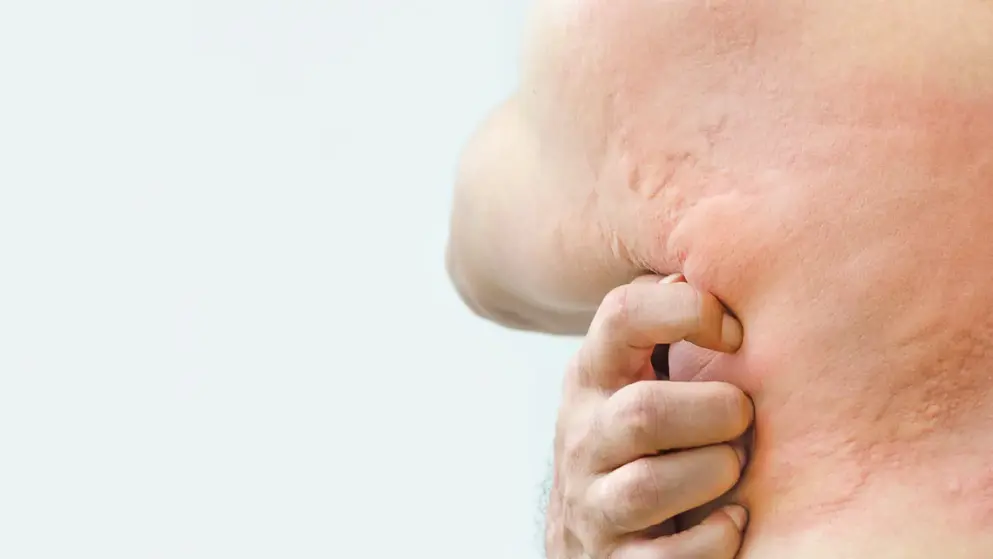
Urticaria
Urticaria is a skin disease presenting with wheals or angioedema due to high levels of histamine and other chemicals being released from mast cells in the skin. This causes the blood vessels to open up and become ‘leaky’ producing the characteristic rash and swelling associated with the skin condition.
The wheals often appear ring-shaped or round and may appear as lines when the skin is firmly stroked, and usually disappear within 24 hours. Angioedema is characterised by deeper swelling in the skin often around the eyes and lips but may also present on the hands, feet, and genitals, and may take over 24 hours to settle. Rarely, angioedema may become life-threatening if the throat, tongue, or lungs are involved and block airways.
Urticaria, also known as hives or nettle rash, is a common type of skin condition with a lifetime prevalence of approximately 20%, and cases of acute urticaria account for 7% to 35% of skin conditions seen in an emergency care setting. One of the important aspects in the diagnosis of urticaria is differentiating it from other medical conditions such as anaphylaxis, auto-inflammatory syndromes, urticarial vasculitis or bradykinin‐mediated angioedema, including hereditary angioedema (HAE) which, like urticaria, present with wheals and angioedema or both.
There are different types of urticaria classified by the duration and relevance of eliciting factors. Duration of acute urticaria symptoms typically lasts 6 weeks or less, whereas symptoms of over 6 weeks are classed as chronic. Urticaria can be induced by a specific factor, like an allergic reaction or an insect bite, or it can be spontaneous with no specific factor involved. An allergy test may be required for patients.
An important variant of urticaria, chronic spontaneous urticaria (CSU), is a long-term condition associated with a high burden of disease and a significant impact on quality of life. CSU can involve the immune system and may occur in combination with other autoimmune conditions, chronic illnesses, and infections. Medications such as angiotensin-converting enzyme (ACE) inhibitors used to treat high blood pressure may also be linked to increased severity of symptoms.
Resources created with our funding partners
of interest
are looking at
saved
next event



